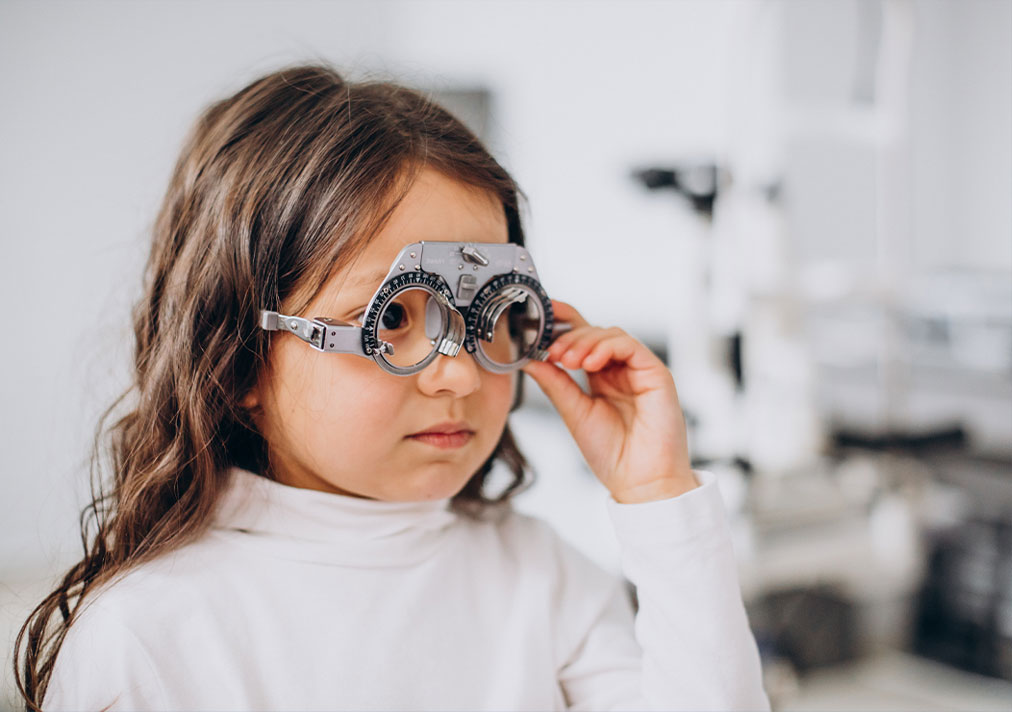Digital Eye Strain: Computer vision syndrome (CVS) or digital eye strain is a known group of vision-related problems that happen because of prolonged use of digital screens including computers, mobile devices, tablets, and e-book readers. The extent of the problem is directly related to the hours of digital screen usage. This is a very common issue with office goers who spend more than 6-7 hours every day in front of any digital screen.
Mandatory nationwide lockdown and “stay at home” orders imposed all around the globe in response to the Covid-19 pandemic has made everyone to work from home and spend extra leisure time with screens, and this has created a tremendous spike in exposure time to mobile and other screens for everybody.
CVS is associated with the following symptoms –
- Dry eyes
- Eyestrain
- Headaches
- Blurred vision
- Time lag in focusing from distance to near and vice versa
- Neck and shoulder pain
Viewing a digital screen is much more visually demanding on the eyes than reading a printed paper. Нou can flip through the feed of social networks, or just check your mail – at this time your eyes suffer. Another important factor that contributes to increasing Dry Eyes in CVS is the fact that while concentrating on a screen a person does not blink as often as he/she would normally. The reduced blinking rate makes the tear film over the surface of the eyeball to dry up quickly. The direct blow of Air conditioner or fan accentuates this drying and makes the situation even worse.
Treatment includes preventive measures, vision correction, and medications in the form of eye drops.
Measures that help in decreasing the symptoms and prevent severe eye strain and dry eyes include
- 20-20-20 rule: while using a digital screen take a break of only 20 seconds every 20 minutes and try to look at distant objects at least 20 feet away. This helps in relaxing the internal eye muscles and decreases the accommodative stress.
- Location of the computer screen – Most people find it more comfortable to view a computer when the eyes are looking downward. Optimally, the computer screen should be 15 to 20 degrees below eye level (about 4 or 5 inches) as measured from the center of the screen and 20 to 28 inches from the eyes.
- Reference materials – These materials should be located above the keyboard and below the monitor. If this is not possible, a document holder can be used beside the monitor. The goal is to position the documents so you do not need to move your head to look from the document to the screen.
- Lighting – Position the computer screen to avoid glare, particularly from overhead lighting or windows. Use blinds or drapes on windows and replace the light bulbs in desk lamps with bulbs of lower wattage.
- Anti-glare screens – If there is no way to minimize glare from light sources, consider using a screen glare filter. These filters decrease the amount of light reflected from the screen.
- Seating position – Chairs should be comfortably padded and conform to the body. Chair height should be adjusted so your feet rest flat on the floor. If your chair has arms, they should be adjusted to provide arm support while you are typing. Your wrists shouldn’t rest on the keyboard when typing.
- Blinking – To minimize your chances of developing dry eye when using a computer, make an effort to blink frequently. Blinking keeps the front surface of your eye moist.
Uncorrected or under-corrected refractive error (spectacle power) may worsen the problem of digital eye strain. Special lens designs, lens powers or lens tints or coatings may help to maximize visual abilities and comfort.
Lastly, different medicines in the form of lubricating and anti-inflammatory eye drops are available for managing different categories of dry eyes. Your eye specialist can help you choose the right medicine that suits your condition.
We, at Eye-Q group of hospitals, have been providing large number of teleconsultations to patients in all age groups with symptoms related to dry eyes and CVS due to excessive exposure to screens during this unprecedented time of lockdown. Our doctors and the team of healthcare providers are helping patients without the need of them to leave the safety and comfort of their homes by the use of teleconsultation, E-pharmacy (Free home delivery of medicines) and Home Health care initiatives.
Also read- Eyecare and COVID-19 pandemic




